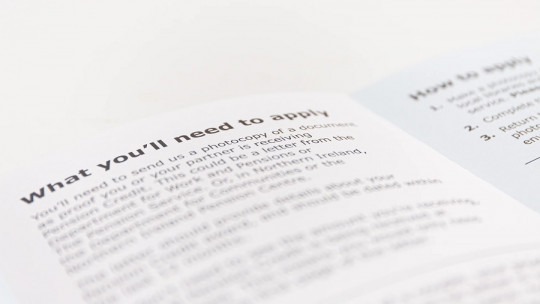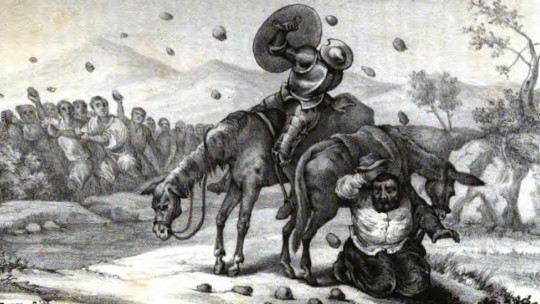
Reporting is one of the most important journalistic genres, given its great versatility when describing any topic.
Depending on the topic they discuss and how the information is presented, we can talk about various types of journalistic reports which we will see in more detail below.
Types of journalistic reports
Reporting is one of the most important journalistic genres. This is mainly due to the fact that they are very versatile, and you can talk about any topic in them, such as real current events, travel, social problems, cultures, art, sports, government policy and any topic that may occur to you. .
In every report the author investigates and exposes its theme without forgetting the background, circumstances, causes and those involved in the event or topic in question Every note presented in the report is based on data, testimonies, expert statements and opinions of individuals, in addition to combining it with explicit quotes from important people, images or diagrams.
The reports fulfill several functions, among them the investigate an issue, describe it, entertain and inform the public and contribute to the expansion of documentation on the topic in question. These functions are also achieved thanks to the fact that the information presented in them has a profound character, almost bordering on what would be a scientific investigation.
There are different types of journalistic reports, which can be classified according to their purpose, more related to the type of topic that is presented in them, and they can also be classified according to how the content is organized.
Types of reports according to their purpose
Depending on the purpose of the work, we can classify journalistic reports into the following categories.
1. Demonstrative report
In the demonstrative report, the journalist is dedicated to discovering problems, basing his work on social complaints or on issues that have raised great controversy or demand in society.
In this type of work the text is not limited to the simple presentation of the facts. In addition to describing what has happened, It is about investigating the causes of the problem, what has contributed to it happening and what consequences it has facing society. It is about offering a more complete overview of the matter in question.
Given that this type of report can be very dense, causing the reader to need to pay close attention to what is described in it, it is common for the author to try to liven up the story or event presented in the document.
2. Autobiographical report
The autobiographical report has its origins in the journalist Tom Wolfe, an American known for having made important innovations in journalistic style.
In essence, the autobiographical report is nothing more than a research paper in which the protagonist is the one who is writing it although this does not mean that other people are not mentioned during its writing, people who may have acquired great importance in the author’s life.
This type of work is done when the person writing it has something important to tell related to their life, usually telling it in the first person and from their own perspective.
3. Scientific report
Scientific reports are intended to demonstrate current scientific progress and advances talking about topics as diverse as biology, genetics, psychology, mathematics… They address scientific knowledge in an objective and very well-documented way, explaining and interpreting it in lay terms, in order to adapt it to the level of people who do not necessarily They are experts on the subject.
4. Narrative report
Narrative reports take the form of a chronicle They describe temporary events, structuring the information to describe the event or problem and exposing its development and evolution over time. It indicates what happened first and what came later, whether or not it was a consequence of the first.
In order to prepare a quality narrative report, it is necessary to analyze documents and describe, in the most detailed way possible, people, objects and places that are related to the chronicle. In addition, the opinion and testimony of those who were involved in the event must be known.
5. Descriptive report
The descriptive report It is a text in which the reporter carries out a detailed observation of the topic he intends to expose His intention is to provide, through his work, a clear and detailed image of all the characteristics of the topic he is going to talk about.
They can be on any topic, since these reports have the intention of describing everything corresponding to a certain issue, such as objects, types of people, cities, regions, traditions… either objectively or adding a certain note of subjectivity.
In this type of reports It is very important that an important research task has been carried out but the reporter’s ability to observe is also a fundamental part of it.
6. Retrospective-anecdotal report
The retrospective-anecdotal report Its purpose is to reconstruct characteristics of a past event, based on the information that has reached the present day. That is, history is constructed from the analysis of documents, diaries, testimonies and reinterpretations of the past.
Thanks to this type of reports it is possible to further expand one’s knowledge of something that can no longer be directly observed, given that it is in the past. It also serves to confirm or deny what was believed about the historical event in question.
Types of reports according to the type of content
Reports can also be classified based on how they structure and order their content, and in this case the following types can be found.
1. Reporting of events
The reporting of events consists of present a static view of the facts That is, the journalist acts as an observer, describing the events seen from the outside. Events do not have to be presented in chronological order, in fact, it is more common for them to be presented in order of importance and simultaneously.
2. Dating report
These types of reports are usually known as interviews. The facts emerge from what the interviewee tells The topic discussed, that is, the life of the interviewee or his opinion, is put together by alternating both descriptions made by the journalist and textual words mentioned by the interviewee. In this way, truth is given to what is described in the report.
Unlike other types of journalistic reports, in dating reporting there are no pre-established rules on how it should be carried out, although a script can be followed to structure and direct the interview. However, it is best to avoid forcing dialogue, trying to establish a pleasant conversation, with questions that arouse interest and motivate the interviewee to answer honestly.
3. Action report
Unlike event reports, action reports present events in a chronological and dynamic way, as if they were living at this very moment. This is the type of report that is used when describing historical events in the trenches, such as the multiple journalistic reports carried out in the nineties during the Yugoslav Wars or when describing the Syrian Civil War.
4. Investigative reporting
Although in truth most of the reports carry out an important investigative task, The style and depth acquired in investigative reports is much greater
In the investigative report, they are works that acquire an almost detective character in order to find all the details of the specific issue. The intention is to know everything possible about the topic to be discussed, and to see if there has been anything that previous researchers missed.
But To carry out a true research work, it is necessary for the author to consult truthful sources, quality information, from experts, and even, if possible, resort to confidential sources that provide evidence. This type of work usually contains information in the form of statistical data, updated figures or documents with official information.








